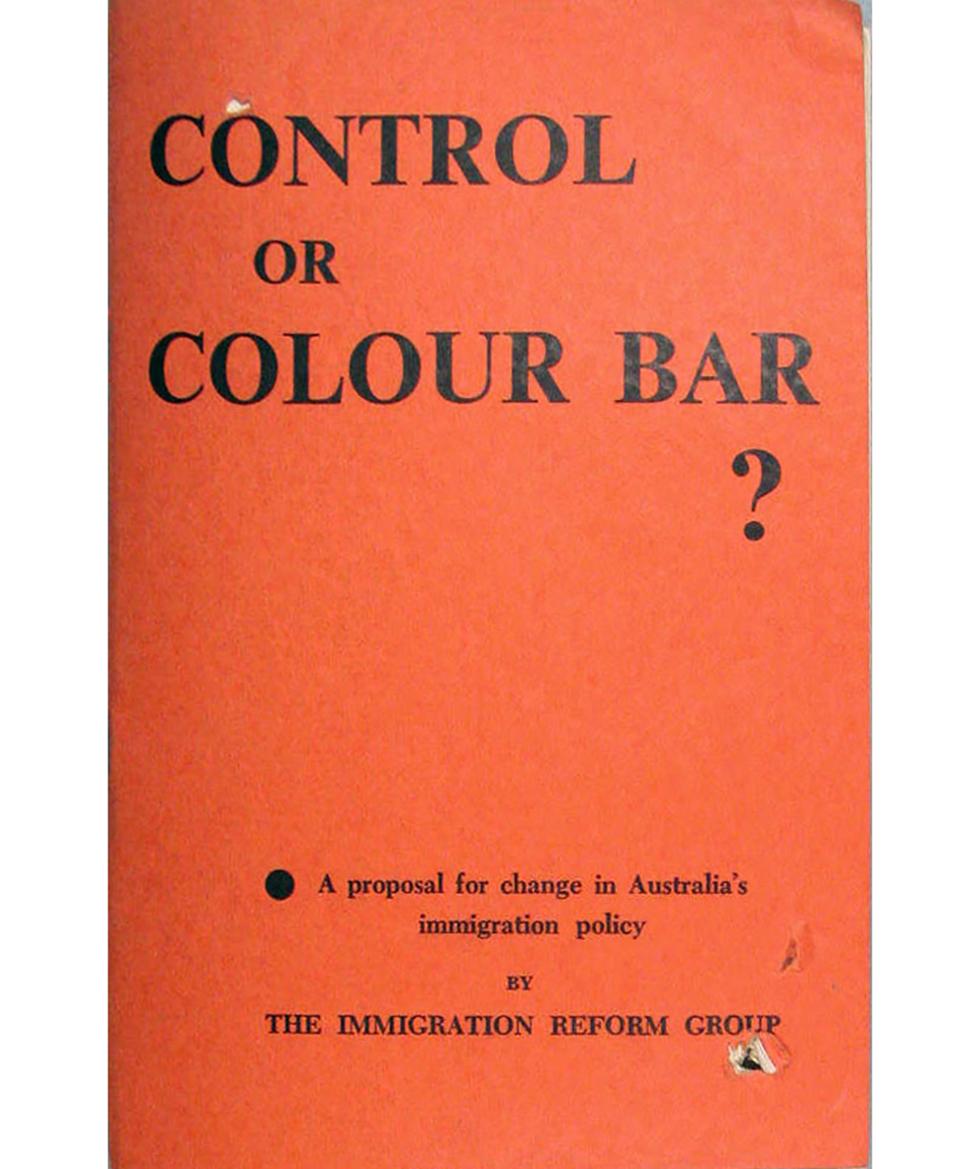
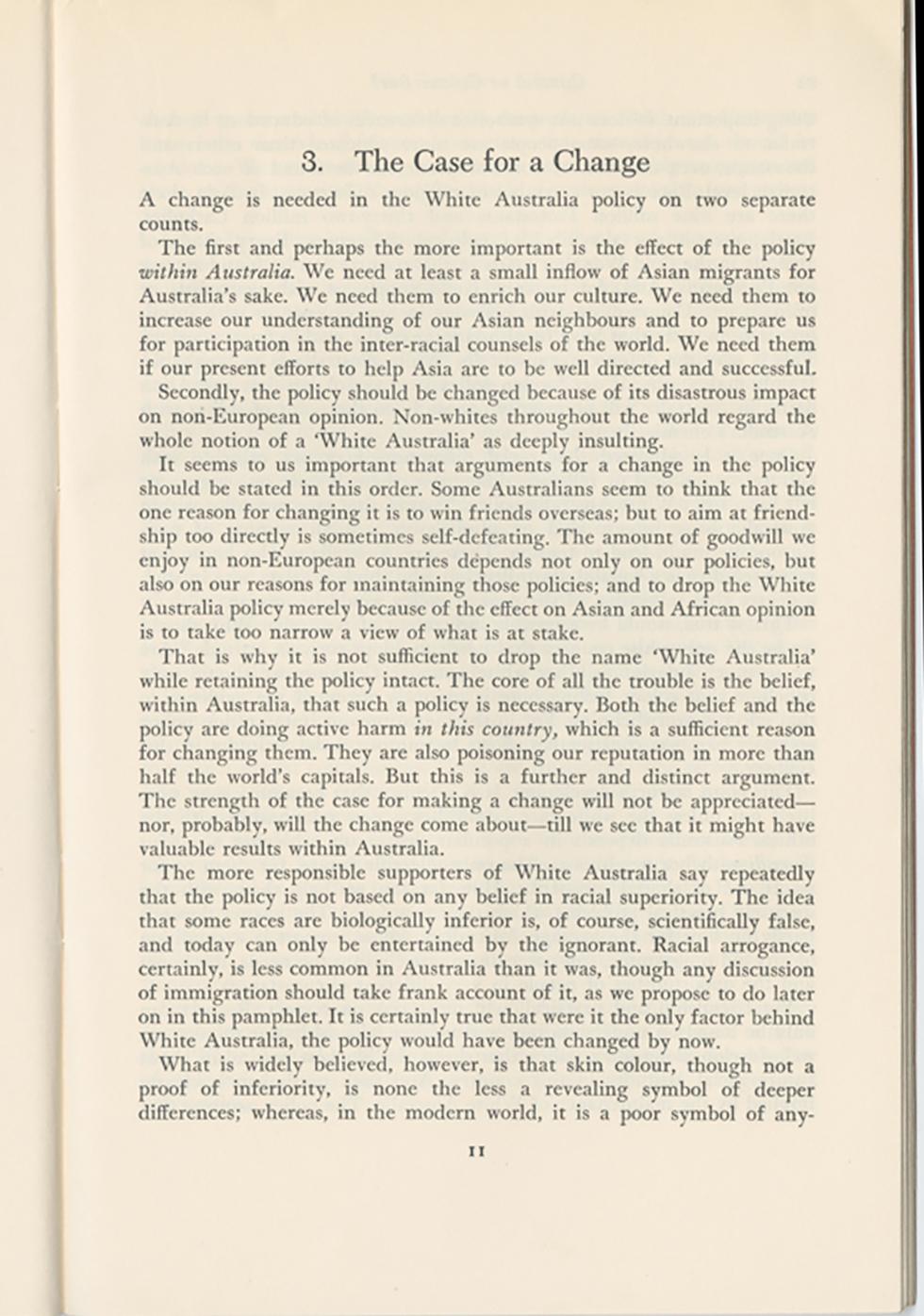
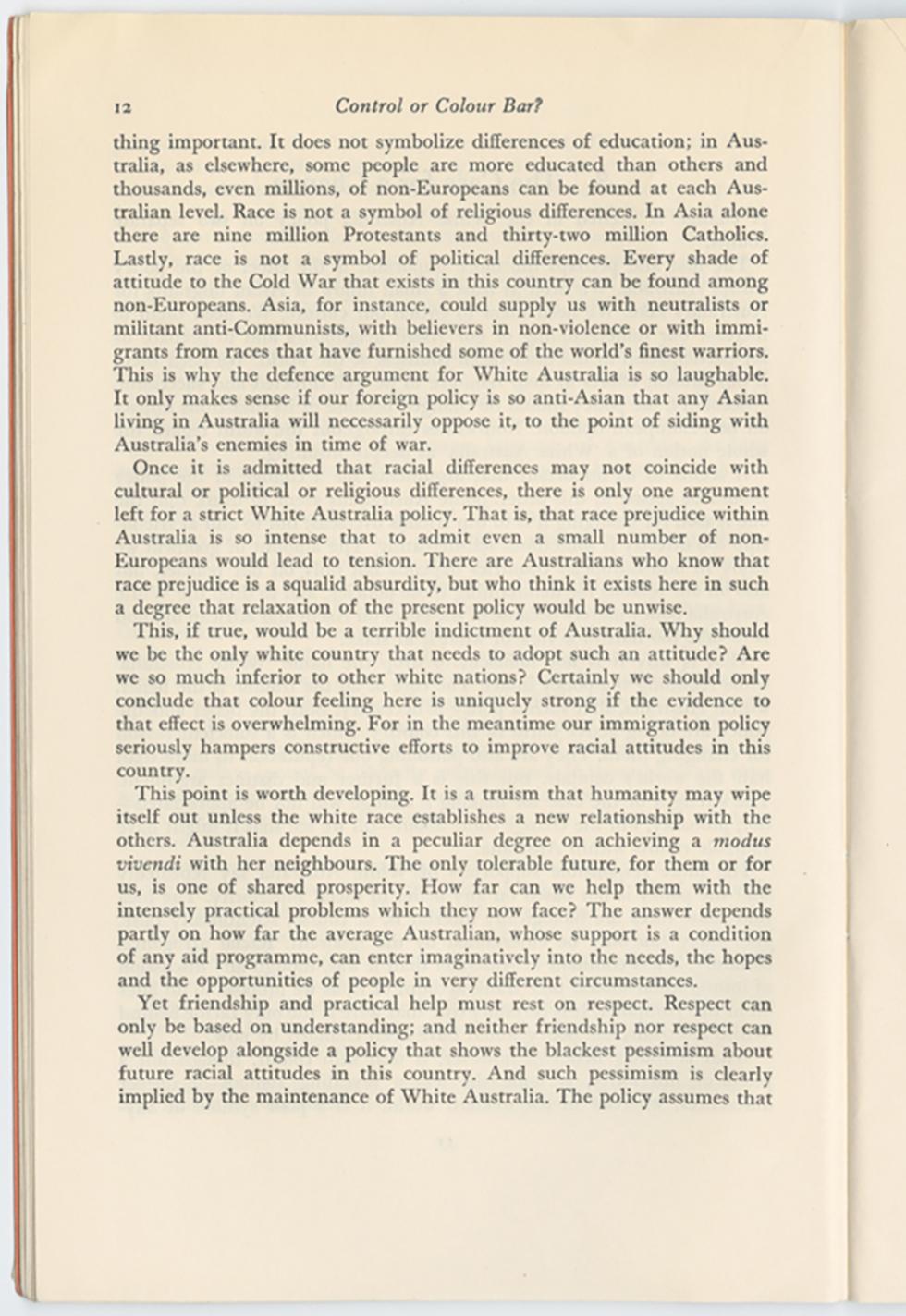
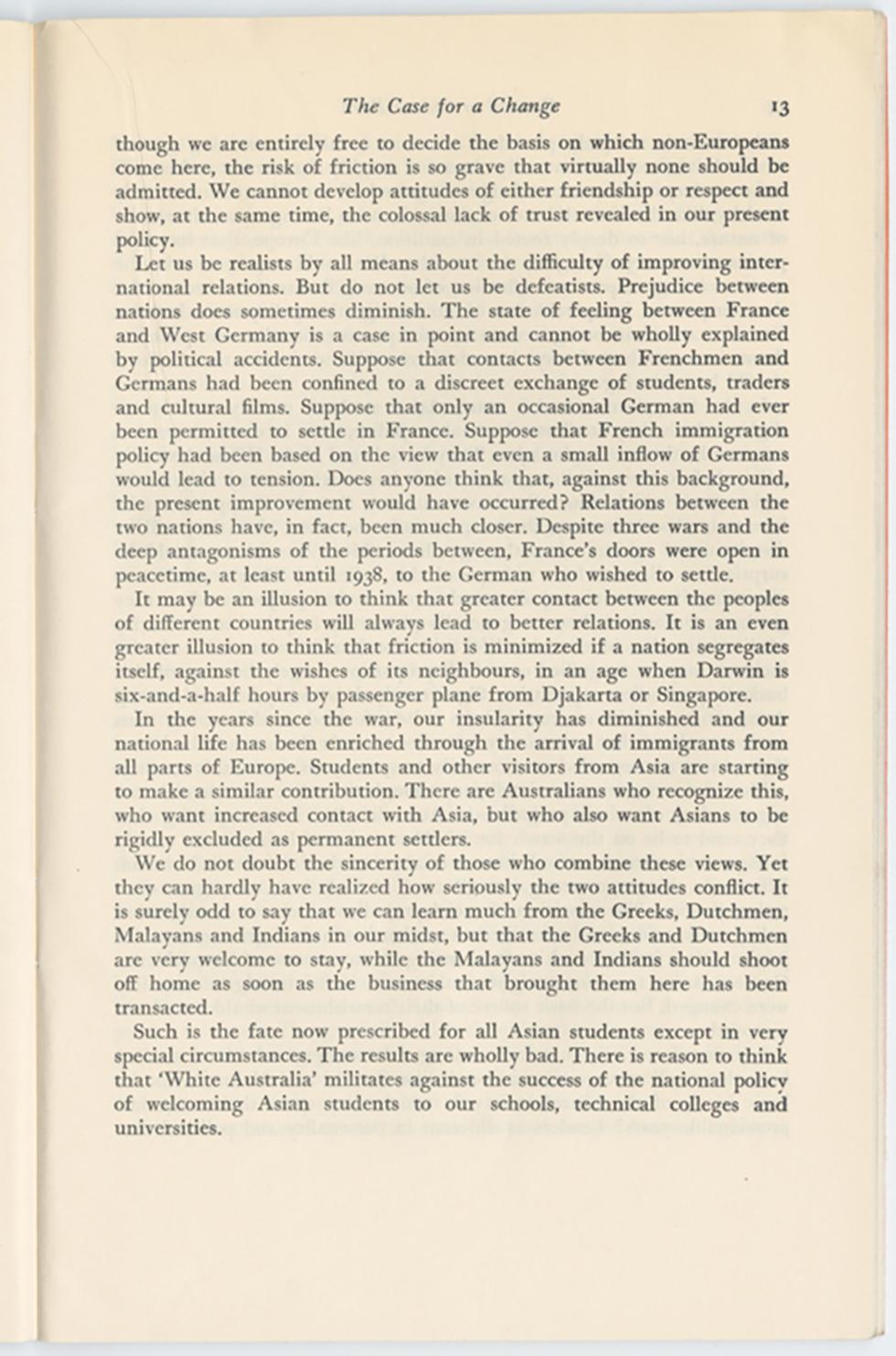
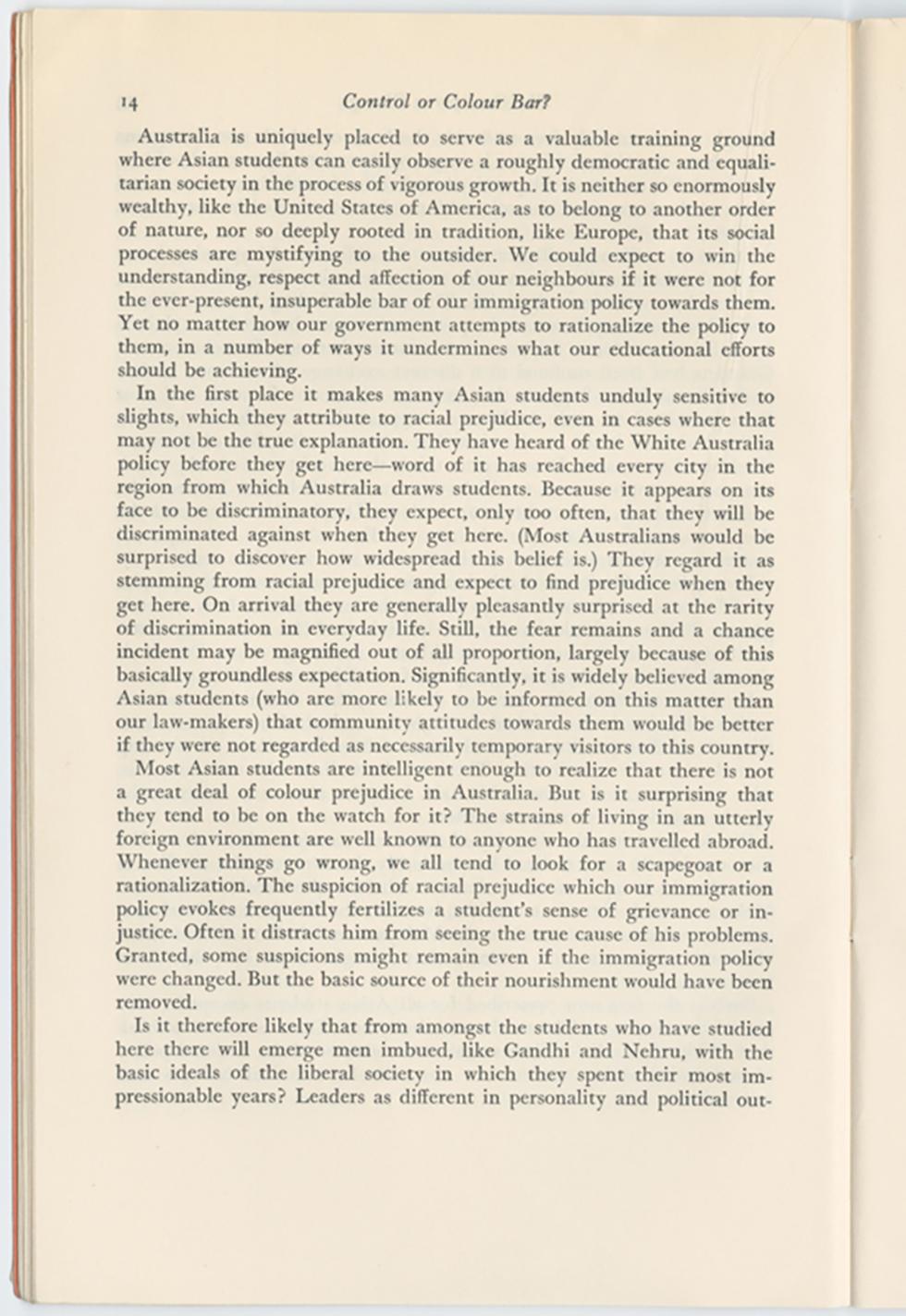
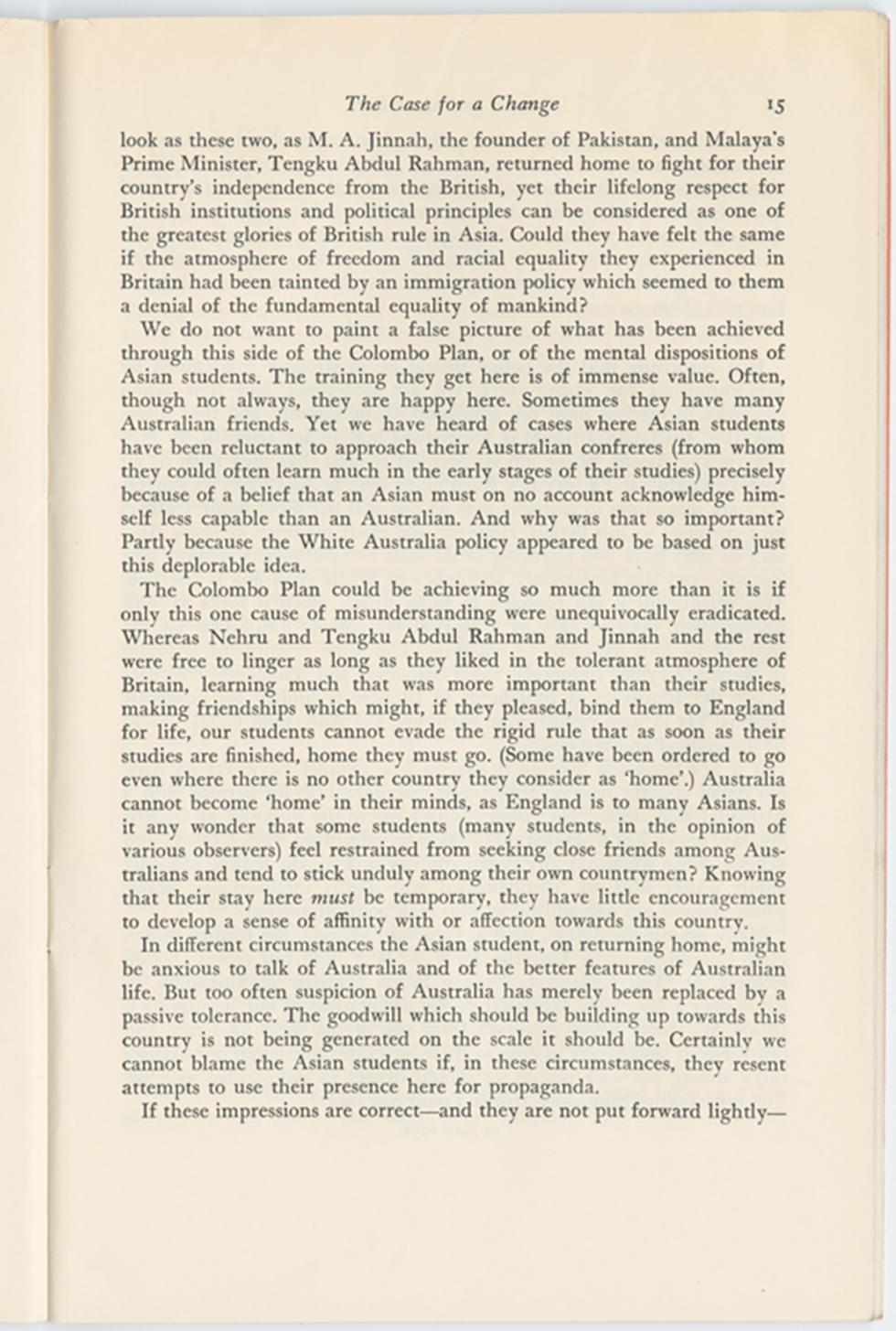
Aboriginal and Torres Strait Islander people should be aware that the National Archives' website and collection contain the names, images and voices of people who have died.
Some records include terms and views that are not appropriate today. They reflect the period in which they were created and are not the views of the National Archives.







Control or Colour Bar? A proposal for change in Australia’s immigration policy was a 32-page document written by the University of Melbourne’s Immigration Reform Group. It was published in 1960 and revised and reprinted in 1962.
Learn how to interpret primary sources, use our collection and more.
